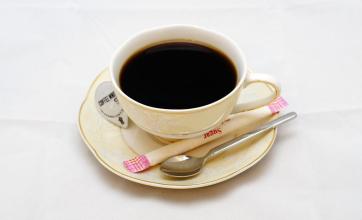Introduction to Paradise Bird Manor in Papua New Guinea Coffee Manor
The government's response is to establish a new level of quality, temporarily suspend the production of coffee such as Y, and no longer implement the policy of "one grade, one price". This allows buyers to price according to quality, which is bound to have an impact on the income of farmers who produce shoddy coffee beans. By 1993, the quality problem had been basically solved. Most regular customers are buying coffee from Papua New Guinea again. Coffee such as Y is now sold at a slightly lower extra price, indicating that its quality has improved.
Although coffee trees grow vigorously in some places, the coffee beans harvested vary from raw to ripe due to the lack of persistence of the growers. AA is rare, and you can usually buy An and AB grades. The main characteristics of Grade A coffee are: full granules, light acidity and almost inevitably a decline in quality as a result of a sharp increase in production. Before 1991, the quality of coffee was good, and most of it belonged to open Y and so on. After 1991, the quality gradually declined, and with it the European market was lost. The extra price of coffee such as Y also gradually fell. This is related to the country's policy of "one grade, one price". This policy is not feasible for an industry as volatile as coffee. As a result, poor quality coffee beans have damaged the image of high quality standards for coffee such as Y, creating a backlog in which the coffee industry occupies a very important position in the country's economy. More than 1 million people are directly and indirectly engaged in the industry. The government encourages planting by offering a minimum purchase price. The industry itself is controlled by the Coffee Industry Council (Coffee Industry Board). The commission is located in Goroka, in the eastern part of the island, while exports are handled by private companies.
The frost in 1975 destroyed most coffee crops in Brazil, but stimulated the development of coffee in Papua New Guinea. The Government has implemented a scheme to finance the creation of about 20 hectares of coffee plantations in rural or collective land ownership. This measure has indeed increased the penetration of coffee in the local economy. By 1990, annual production had reached 1 million bags in Papua New Guinea, with about 75 per cent of coffee products coming from small local farms. Many farms reclaim land in the forest, and some are in the depths of the forest, almost isolated from the rest of the world. Coffee in the country is grown on highlands between 1300 and 1800 meters above sea level, so it is of high quality. Although coffee is also grown in some lowlands, the yield is relatively small. Most of the locally grown coffee is grown under natural conditions, which is due to the problems and high cost of transporting chemical fertilizers and pesticides to the farm.

Important Notice :
前街咖啡 FrontStreet Coffee has moved to new addredd:
FrontStreet Coffee Address: 315,Donghua East Road,GuangZhou
Tel:020 38364473
- Prev

Introduction to the Nicaraguan Lemon Tree Manor located in Central America
Nicaragua, located in the middle of Central America, is the largest country in China and the United States, bordering Honduras in the north, Costa Rica in the south, the Caribbean Sea in the east and the Pacific Ocean in the west. The eastern part is the coastal plain, the high temperature and rainy climate belongs to the tropical maritime climate, and the western part is the coastal lowland with more active volcanoes. The north-central part is a highland, with an average annual temperature of 18 ℃ and an annual precipitation of 1500-2500mm.
- Next

The flavor and taste of Indonesian musk cat coffee introduction to Fuyin Manor
In the coffee industry, Kopi Luwak is widely regarded as a product with novelty as the selling point. The American Special Coffee Association (Specialty Coffee Association of America,SCAA) says the industry consensus is that it tastes bad. SCAA quoted a coffee expert as saying: obviously, the selling point of Kopi Luwak is its story, not its quality. Adopt SCAA
Related
- Does Rose Summer choose Blue, Green or Red? Detailed explanation of Rose Summer Coffee plots and Classification in Panamanian Jade Manor
- What is the difference between the origin, producing area, processing plant, cooperative and manor of coffee beans?
- How fine does the espresso powder fit? how to grind the espresso?
- Sca coffee roasting degree color card coffee roasting degree 8 roasting color values what do you mean?
- The practice of lattes: how to make lattes at home
- Introduction to Indonesian Fine Coffee beans-- Java Coffee producing area of Indonesian Arabica Coffee
- How much will the flavor of light and medium roasted rose summer be expressed? What baking level is rose summer suitable for?
- Introduction to the characteristics of washing, sun-drying or wet-planing coffee commonly used in Mantenin, Indonesia
- Price characteristics of Arabica Coffee Bean Starbucks introduction to Manning Coffee Bean Taste producing area Variety Manor
- What is the authentic Yega flavor? What are the flavor characteristics of the really excellent Yejasuffi coffee beans?

